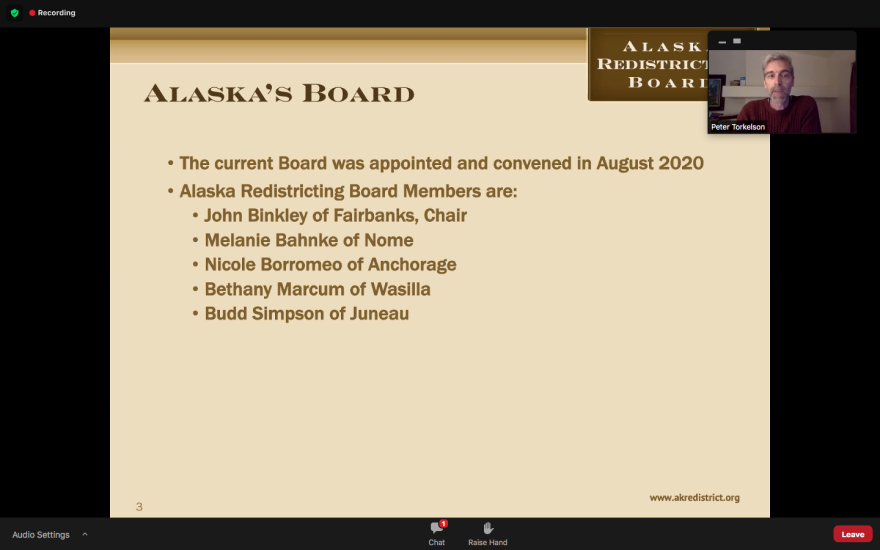With the U.S. Census largely complete, it’s time now for the Alaska Redistricting Board to redraw house and senate districts, boundaries that will be in use for the next decade.
Peter Torkelson is the executive director of the Redistricting Board. He gave an introduction to the process to the Homer City Council this week.
“You know, redistricting is a messy process. There's usually litigation involved and why do it? Well, the reason we do it is because the U S and Alaska constitutions. Require that to the degree possible, we have one person, one vote. So if people move out of a district, then your vote would have more impact and more people move to your district, then your vote would be diluted,” Torkelson said. “So every 10 years we have to draw new lines to make up for the fact that people move in and out of Alaska a lot.”
The Census Bureau’s population figure for the State of Alaska was announced recently; there are officially 733,391 residents here, and that determines how many people are included in house districts.
“Our district target is one house district is 18,355 people this time. That's up from 17,700 last time,” he said.
Torkelson said that Alaska is one of several states with sizable minority populations that have its voting blocs protected by the federal government.
“You may be aware that Alaska is subject to the voting rights act, which is federal legislation passed during the civil rights era in the late sixties, it applies to Alaska. It protects Native minority, Alaska Native minority voting strength. And so that's a very technical piece of legislation that applies to any decisions the board makes. And we spent a lot of time reading up on the case law and trying to educate ourselves, so we know as much as we possibly can about how that's going to apply to Alaska,” Torkelson said. “Until we get the census numbers it's, it's sort of all theoretical. We just don't know where people have moved to and from, you know, everyone has theories, you know, we think this has grown or that, but until we see the numbers, we just don't know how that will play out.”
Mayor Ken Castner quizzed Torkelson about protections against gerrymandering, which is a partisan drawing of election districts to benefit one party over another.
“Has the board adopted any anti-gerrymandering policies, something along that line?” the Mayor asked.
“The board’s express a strong commitment to be as neutral and bipartisan as possible. We don't have a formal policy. There is a suite of policies that we're in the process of drafting at the staff level. And some of those addressed that,” Torkelson said. “But I'll say last cycle, 10 years ago, Senator Torgerson just made a decision as chair, that the district board would have no access to the partisan party registration data of voters.
“You may know that the Division of Elections retains that data and it would be available to anyone who wants to get it. But they did not use that 10 years ago. They didn't even have it on their computers. It was invisible. And the board's expressed sympathy with that process. And I would expect that this time they would also not take into account any partisanship concerns about where certain party flavors might lie. That's just not something that's this board has shown any interest in doing.”
Torkelson said the Redistricting Board is expecting precise population numbers by September. At that point a 90-day clock starts running, during which the board is required to adopt a new redistricting map. Expect public presentations on various map designs to happen late in the year.
Redistricting Board Ready to Redraw Alaska's Election Districts

KBBI

